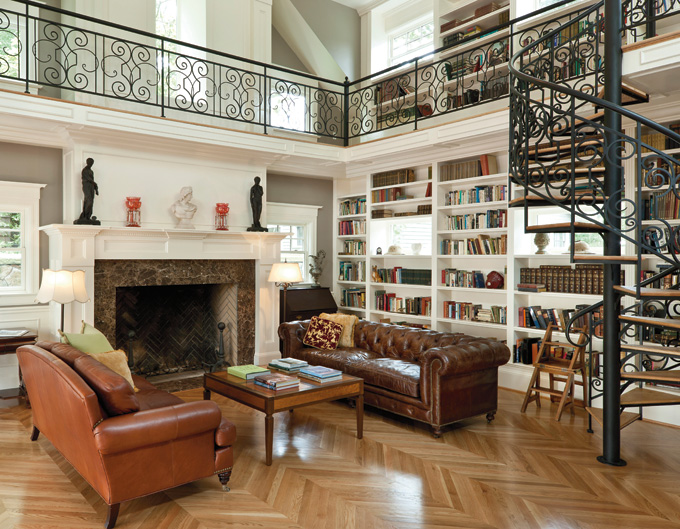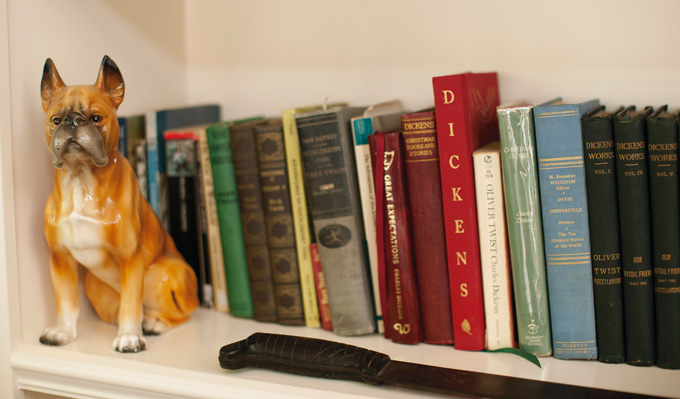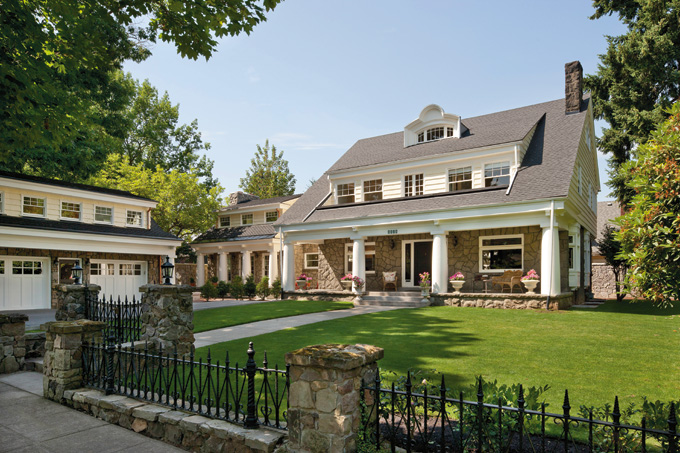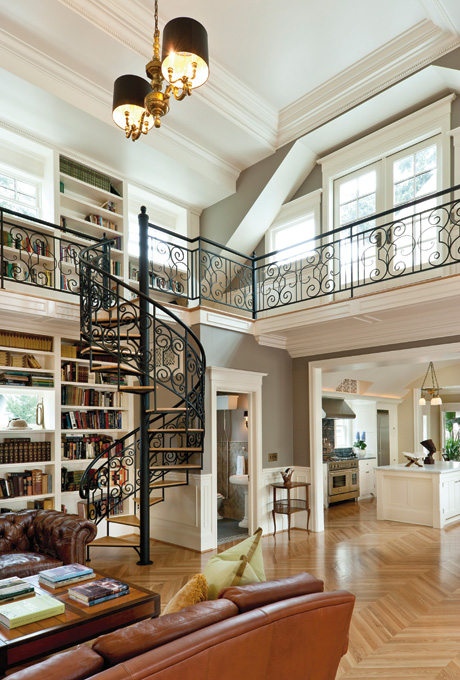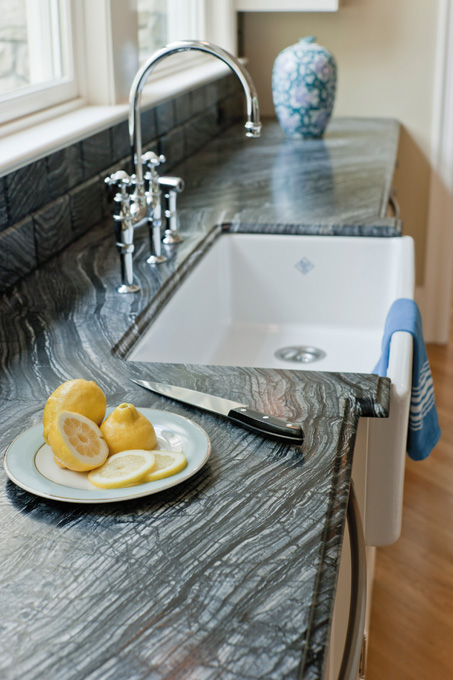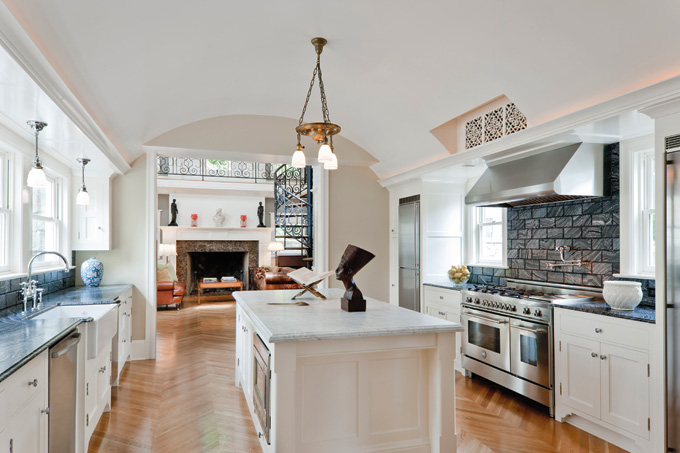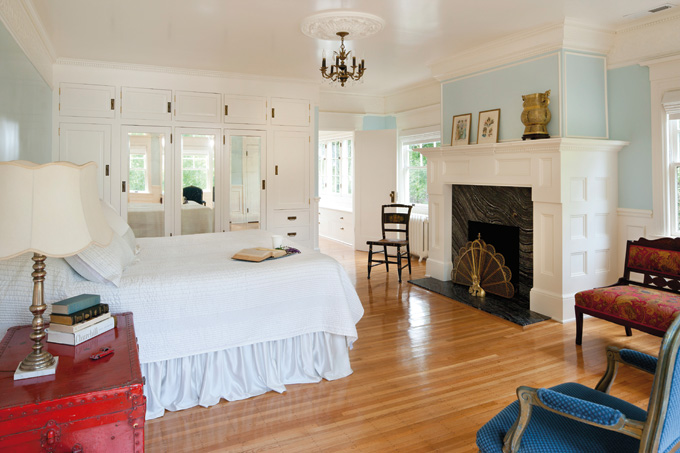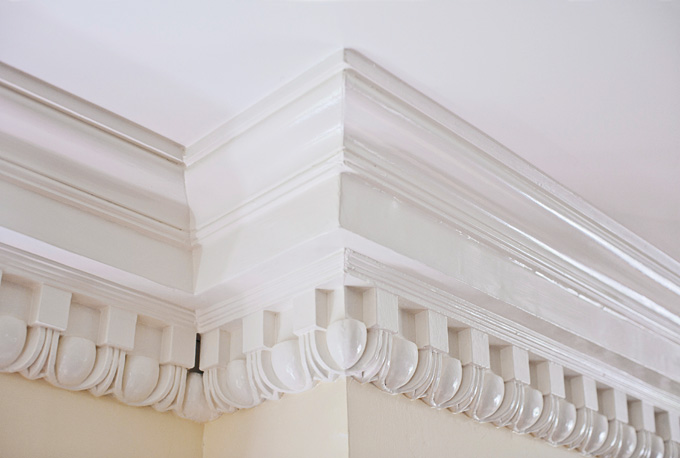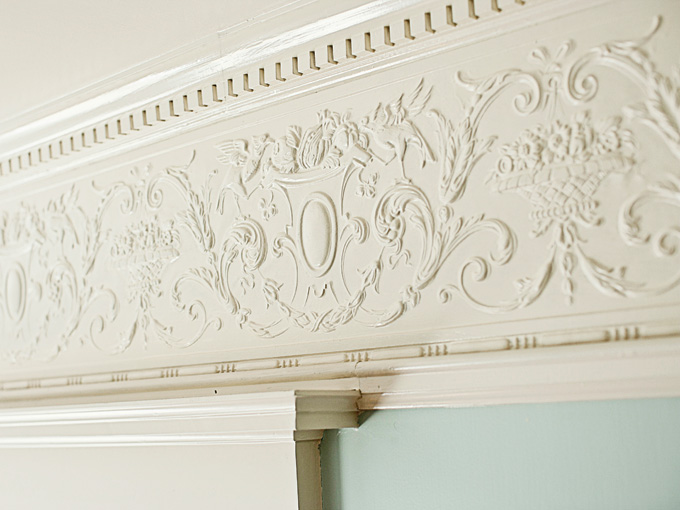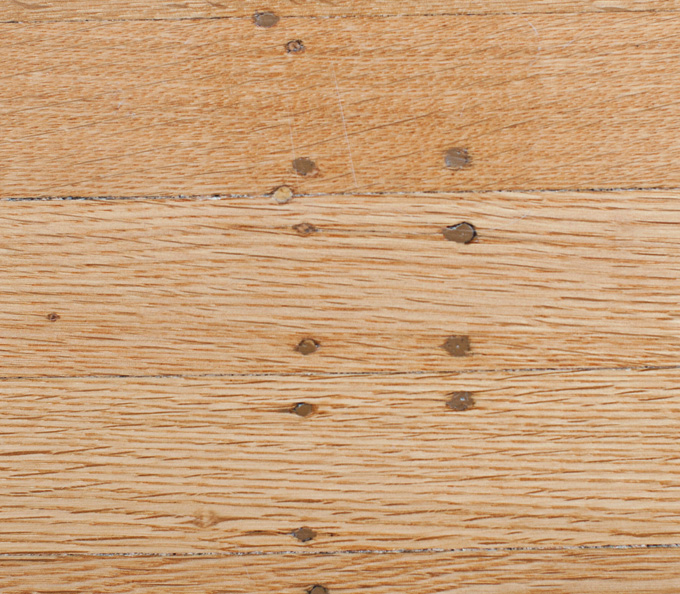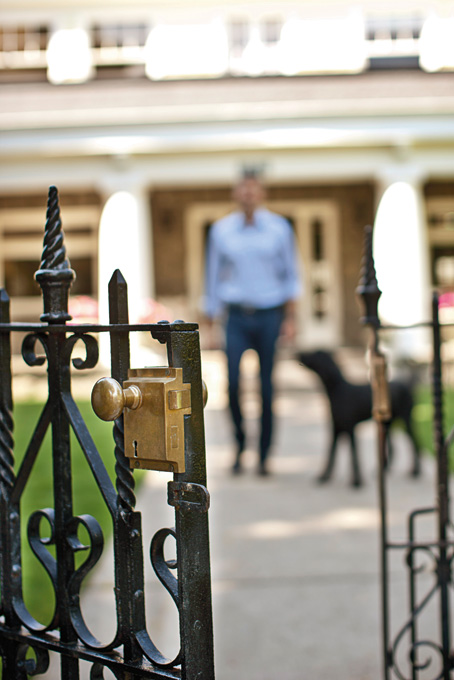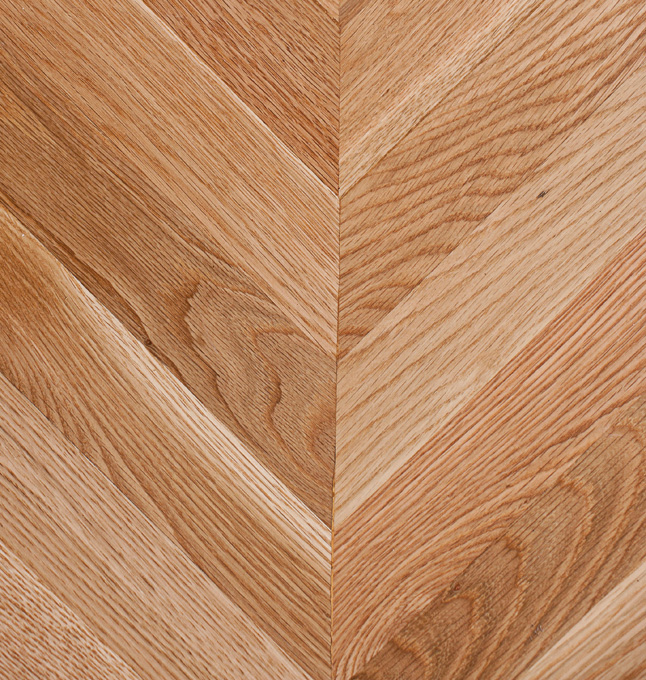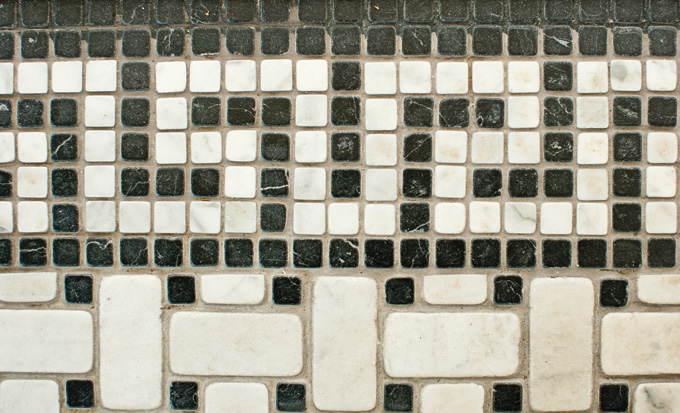{artsexylightbox}{/artsexylightbox}
You’d think a man who builds houses for a living would know better than to fall in love with an old one. But John McCulloch is a sucker for a pretty place.
The object of his affection? A Dutch Colonial Revival circa 1912 in the Irvington neighborhood of Northeast Portland.
“The same year,” he notes, “that the Titanic sank.”
The house too was sinking, or at least sagging in the center. Its water pipes had rusted and leaked inside walls. Dry rot had invaded the wood. The wiring was shot. And the grounds were in such bad shape, they’d require 20 dumpsters to cart off the ivy alone.
But the owner of McCulloch Construction was smitten. He bought the house in August 2010.
McCulloch, who almost accepted a position as a writing professor before he turned to buying and renovating homes 19 years ago, drew on both his academic and building expertise for this particular project. He researched. He read. He made a study of the era, the building, the builder and the original owners of the home, before putting his team to work restoring the old house to her glory days and then some.
{besps}articles/2012/2012_OctNov/Irvington|width=680|height=500{/besps}
{besps_c}0|01.jpg|John McCulloch’s remodeled Dutch Colonial Revival home in Irvington.The original house has four large columns on the front porch. The kitchen and library addition, to its left, and new garage with second floor office space in foreground, were designed to blend with the Dutch Colonial Revival style in Northeast Portland.|PHOTO JOHN VALLS{/besps_c}
{besps_c}0|02.jpg|Floor plans show how builder/owner John McCulloch added a kitchen, library and garage without crowding the corner lot.|{/besps_c}
{besps_c}0|03.jpg|By reworking existing space, McCulloch turned what was the old kitchen into a breakfast room with doors to a patio and to the fountain room and conservatory.|{/besps_c}
{besps_c}0|04.jpg|Drawing of the interior of the library with its spiral wrought iron stairs and railing on upper floor.|{/besps_c}
{besps_c}0|05.jpg|John McCulloch has a passion for preserving and matching historical details when remodeling vintage houses for modern living.|PHOTO JOHN VALLS{/besps_c}
{besps_c}0|06.jpg|A more detailed sketch of the west wall of the library shows the idea of the spilt chimney flue evolving.|{/besps_c}
{besps_c}0|07.jpg|The library ceiling soars up to a second level with a catwalk-like floor on three sides for easy access to books and a balcony above the kitchen that leads to the second story of the original house.|{/besps_c}
{besps_c}0|08.jpg|The third floor of the original house includes two bedrooms with antique light fixtures and a shared bath.|{/besps_c}
{besps_c}0|09.jpg|The basement could hold a couple bowling lanes, pool table or workout equipment and still have room to spare. |{/besps_c}
{besps_c}0|10.jpg|The addition of the garage, kitchen and library helped form a courtyard that McCulloch has already found useful when hosting parties and fund-raising events for up to 150 guests.|{/besps_c}
{besps_c}0|11.jpg|The garage can hold four small vehicles and the space above with a bath and shower now serves as McCulloch Construction offices but could one day be rented out as an additional dwelling unit.|PHOTO JOHN VALLS{/besps_c}
{besps_c}0|12.jpg|John McCulloch’s sketches for his home.The rock face, shingle siding and substantial columns give the garage the look of an old carriage house and echoes the style of the original home.|{/besps_c}
{artsexylightbox}{/artsexylightbox}
The cost of structural fixes alone came close to $500,000. On top of that, he added new space with a gourmet kitchen that opens onto a grand family room/sitting room/library, and a garage with office or guest quarters above, all meticulously — maybe even obsessively — rendered to echo the style of the era. The wood railing with its distinctive curve, the inlay stone floor in the star pattern and the marble wall tiles in the kitchen that were hand-finished to get beveled edges are all true to the period.
“I became a fiend for those historical details,” McCulloch says.
The house was first built on spec by Frederick Bowman, who developed many houses in the Irvington neighborhood. At the time, Theodore Roosevelt was a new national hero, and his bullishness for hale and hearty living permeated popular culture all the way down to residential building trends in Portland. The fountain room and two sleeping porches, meant to oxygenate the house for health, are prime examples. The original homeowners,Roscoe and Sophronia Giltner, hosted sophisticated parties covered in detail by the daily newspaper. Records of what guests wore, the food they ate and how the noted attorney and socialite decorated their home — with red geraniums and palm trees for one event — are charming. McCulloch blew up several newspaper clippings to display during a historic home tour.
But McCulloch had no qualms about altering the existing kitchen. It was tiny and not terribly useful. He turned the existing space into a sunny breakfast room, and he built an addition to house a brand-new kitchen with all the modern amenities he wanted and future buyers would expect. The cove ceiling, crown molding, wood floors and black-and-white stone countertops are in keeping with the style of the rest of the house. The recessed lights may seem ultra modern, but the design dates back to when electricity in homes was still relatively rare. McCulloch tucked them behind crown molding so they illuminate the graceful curve of the ceiling.
{artsexylightbox}{/artsexylightbox}
The kitchen leads through to a new great room with an oldfashioned purpose: It’s a library. Bookcases stretch up two stories, with spiral stairs leading to a catwalk that hugs three walls. A cozy window seat is the perfect place for curling up with a book overlooking the library. McCulloch arranged titles in order of publication, for a kind of hardback evolution of writing for the curious reader. The room, visitors noted, looks like something out of an old movie. Without missing a beat, McCulloch interjects.
“Where the devil are my slippers, Eliza,” quoting My Fair Lady with a laugh.
With the kitchen, library and carriage-house-style garage additions, the house sprawls across the lot. That is in keeping with tradition of Dutch Colonial Revival houses of the 1900s, McCulloch says, which were often built to appear as if they’d been added to slowly over the decades, in imitation of the original 1600s-era European houses that influenced the revival.
“My mother says it’s scandalous to talk square footage,” he says. “But it’s about 9,000.”
{artsexylightbox}{/artsexylightbox}
McCulloch’s extraordinary attention to detail is evident in every part of the house. Every nail in every floorboard of an existing bedroom was removed and restored so the nailheads now line up perfectly. A wall of built-in drawers in the master bedroom only appears to be original. Drawer pulls in the kitchen are reproductions of a 1910 style, because McCulloch reasoned a Portland builder in 1912 might be “a couple years behind” the latest hardware designs. But he’s not just aping the old. Take the new code-required handrail that threatened to obstruct the view through the interior windows he’d planned. McCulloch figured that if he used cut-glass windows and lined them up just so, the prism of the glass would demagnify the railing so that it virtually disappears.
“I stay awake nights thinking about these things,” he says.
He is thoughtful about the structures he builds, whether historic remodels or new construction.
“Our lives are fleeting,” he says, “while our homes go on.”
{artsexylightbox}{/artsexylightbox}
Elements of surprise
- McCulloch is a hands-on builder. He learned how to lay wood floor in a herringbone pattern (left) and taught his crew the old technique for an authentic, decorative touch that runs through the kitchen and library.
- The iron railing made by Laura Sol of Sol Creations of Portland is a simplified version of an ornate one in the Vanderbilt Library. Sol also makes metal furniture, sculpture and garden pieces.
- The breakfast-room floor, installed by McCulloch Construction, is in a star pattern similar to ones done by famed architectural firm McKim, Mead & White around the same vintage as the Portland house. West Coast builders often borrowed from East Coast architects, who emulated old European design, so McCulloch figures it’s true to the period of the house.
- Dramatic black-and-white Kenya black marble with a leathered finish was used on the fireplace surrounds, hearths and kitchen countertops, fabricated by de la tierra of Portland. In the early 1900s, high-color-contrast stone was favored, says McCulloch, who considers the zebra-stripe-like stone a modern take on it. Black and white tiles in basketweave and Roman patterns (left) add a decorative touch to the master bath.
- A new ground-floor wood railing copies the unusual rails found in houses built by Frederick Bowman in the early 1900s. It is such a good replica, owners of other Bowman houses have mistaken it for the real deal.
click on photos to view larger



